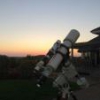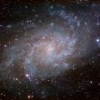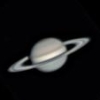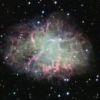
Jason Ware's LX800
#1

Posted 06 December 2012 - 09:21 AM
Link 1
Link 2
Link 3
Link 4
#2

Posted 06 December 2012 - 09:33 AM
-Rich
#3

Posted 06 December 2012 - 09:48 AM
#4

Posted 06 December 2012 - 11:33 AM
I am not sure they are worth the price of a PMX though.
#5

Posted 06 December 2012 - 12:07 PM
They are pretty for sure. There's just something odd seeming about them and I'm trying to figure out why.
-Rich
#6

Posted 06 December 2012 - 12:47 PM
"This is the longest exposure so far with the 12" Meade LX800. Total of 8.3 hours in HA, SII and OIII. The seeing was a little soft so the stars are not as sharp as I would like but not bad."
#7

Posted 06 December 2012 - 01:24 PM
#8

Posted 06 December 2012 - 03:39 PM
#9

Posted 06 December 2012 - 03:51 PM
Tony
#10

Posted 06 December 2012 - 04:30 PM
#11

Posted 06 December 2012 - 06:07 PM
#12

Posted 06 December 2012 - 06:17 PM
The Helix looks great, he may just need more time with the setup.
That's what I thought. The Helix impressed me right away. The stars on NGC281 look pretty much perfectly round to me. The Crab was the weakest of the bunch, but it's also the smallest.
Do amateurs with a 12" SCT regularly capture a better Helix than this?
#13

Posted 06 December 2012 - 06:26 PM
#14

Posted 06 December 2012 - 08:25 PM
http://blog.deepskyc...lix-Nebula.html
but as pointed out,
1) it's a C9.25
2) it has the Optec 0.5X reducer, so EFL is only 1175mm
#15

Posted 06 December 2012 - 08:35 PM
I wonder if Starlock or traditional autoguiding was used.
Kudos to this person making great images.
Peter
#16

Posted 06 December 2012 - 08:47 PM
#17

Posted 06 December 2012 - 09:17 PM
If he was using Starlock, then it may prove that the internal Crayford style focuser inside Meade's new SCT scope is working well.
I do not understand why Jason is the only one successful with LX800 unless his mount is the first to be fixed from the recall.
Peter
#18

Posted 06 December 2012 - 09:19 PM
Those shots at Links 1 thru 4 look really good to me, and the stars look acceptably "round".
I'm not highly motivated to post images here.
#19

Posted 06 December 2012 - 09:44 PM
I do not belong to Facebook and I have no interest in joining. It would be nice if Jason joined Cloudy Nights and share his experiences with LX800 here.
If he was using Starlock, then it may prove that the internal Crayford style focuser inside Meade's new SCT scope is working well.
I do not understand why Jason is the only one successful with LX800 unless his mount is the first to be fixed from the recall.
Peter
According to his posts he's part of Meade's LX800 testing team, he seems to be helping them refine the StarLock code.
#20

Posted 06 December 2012 - 09:58 PM
A very tough crowd -- "His stars aren't round" & "I'm not impressed".
I'm not highly motivated to post images here.
Not tough on images just hating on meade a lot lately. If you took pictures with your celestron equipment and shared them they would be very well received. Write it down.
#21

Posted 06 December 2012 - 10:10 PM
I do not belong to Facebook and I have no interest in joining. It would be nice if Jason joined Cloudy Nights and share his experiences with LX800 here.
If he was using Starlock, then it may prove that the internal Crayford style focuser inside Meade's new SCT scope is working well.
I do not understand why Jason is the only one successful with LX800 unless his mount is the first to be fixed from the recall.
Peter
He's Beta-testing the fixes for Meade.
#22

Posted 07 December 2012 - 12:36 AM
I want to know if it's repeatable
I'm really glad to see some products out of this mount!
#23

Posted 07 December 2012 - 02:25 AM
A very tough crowd -- "His stars aren't round" & "I'm not impressed".
Those shots at Links 1 thru 4 look really good to me, and the stars look acceptably "round".
I'm not highly motivated to post images here.
The standard being applied to these images is NOT what you could expect if you posted your own images. These are being judged harshly because the LX800 on initial release failed rather dramatically to live up to expectations.
Jason is one of Meade's "goto" testers for new equipment--has been for a very long time--so anything short of perfection is not going to be smiled upon. There are a fair number of people who either bought or were thinking of buying LX800's with the expectation of an integrated, simple, well matched astrophotography platform. Personally, I don't think that is possible at these focal lengths--especially "simple".
As far as the quality of the images themselves... Frankly, it is very hard to know how the system is doing without looking at raw data. Are stars bloated because of poor seeing? Por optical quality? Focus shift? Bad focus? Poor tracking? Poor registration? Or just from ordinary processing and stretching? think these images look pretty decent for an experienced astrophotographer working the kinks out on a long focal length setup. I say working the kinks out primarily because there appear to be some minor tracking errors on the Helix.
To really know how the system is performing--to be able to judge I without bringing in our own preferences in processing techniques--we would need FWHM numbers for the guided sub frames and some comparison shots from very short exposures (a few seconds) so we could appropriately account for seeing conditions. I'm not expecting Jason to provide that--not his job.
#24

Posted 07 December 2012 - 05:51 AM
People sometimes compare results to Hubble images, but the Helix nebula is unusual because it is huge and somewhat unique as a "Hubble" result because it is a giant montage and includes data from ground images. A description of the source images can be found here. Note that the ability to spend so much time on a huge montage was partly motivated by the need to point the 'scope away from the incoming Leonid storm of Nov. 2002.
A more representative view of the true resolution capability of the HST can be found in this image. You would need to find and magnify a very tiny piece of the lx800 image and do a side-by-side comparison at the same scale to judge the difference.
Frank
#25

Posted 07 December 2012 - 09:25 AM
Jason has been using SCTs for a while, so I wouldn't anticipate newbie results like focusing errors.
On the bloat on the stars, it has been my impression the entire point of ACF was to avoid that. The stars should be tight pinpoints, shouldn't they?
Now, it would be possible to make tracking errors less visible by purposely processing the stars to bloat them out some. But that would seem to defeat the purpose of even testing the mount.
As for the ad hominem attacks in responses up to now, that's really cheap. The mount and telescope are not only sold as a complete high end imaging system, they've been advertised as that for over a year, and are priced as such. Exactly what should their results be compared with, if not that standard? Software Bisque claims performance only almost as good as the LX 800 and the images from their mounts have tight stars and no bloat.
Just saying it like it is.
-Rich




























